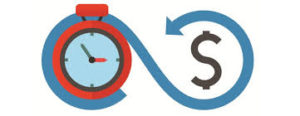Employ a Recurring Revenue Model to Increase the Value of Your Business
Businesses with recurring revenue are generally more attractive and more valuable to buyers.
 Recurring revenue, simply stated, is the portion of a company’s revenue that is highly likely to continue in the future. An effective recurring revenue model creates a “stickier” relationship between the provider of a product or service and the consumer. Those businesses don’t have to spend as much time and money acquiring new customers.
Recurring revenue, simply stated, is the portion of a company’s revenue that is highly likely to continue in the future. An effective recurring revenue model creates a “stickier” relationship between the provider of a product or service and the consumer. Those businesses don’t have to spend as much time and money acquiring new customers.
Effective recurring revenue business models:
- Consumable -The original recurring revenue business was pioneered by Gillette. Entice consumers to use your inexpensive razors and then perpetually sell them expensive razor blades. Computer printers and coffee makers like Keurig has followed suit achieving substantial profit margins on consumables like printer cartridges and coffee containers.
- Subscription – A subscription is a contract to provide a product or service over a period of time, typically annually. Customers are charged for the service or content over the course of the period. Magazine subscriptions and software subscriptions (often called SaaS) fall into this category. There are also many services like janitorial businesses and equipment maintenance businesses that do or could use this model.
- Transaction – Credit card companies that take a percentage of every transaction that they originate invented this type of recurring revenue model. However, over the last few years the “sharing economy” has popularized this approach with other successful companies like Uber and AirBnB. These companies charge a small transaction fee to match sellers with buyers.
- Rental – Finally, a customer that borrows an asset, such as an apartment, a car, or a tool commits to a recurring charge as long as they continue to borrow the asset. This creates a recurring model as well. Data storage companies and many cloud services such as Drop Box utilize this model.
Why recurring revenue models are attractive to buyers:
- Predictability – Businesses that employ a recurring revenue business model, rarely miss monthly or quarterly forecasts because the forecasting models are more accurate. At the beginning of the period, the business starts with a base to grow from rather than beginning from zero. Owners and potential buyers are thus rarely surprised by major fluctuations in results. This predictability has many downstream benefits.
- Expense management – Predictability means business owners can manage their expenses more precisely relative to their revenue. One of the challenges with lumpy revenue models is that until the quarter or the year is over, you don’t know how you did. Which means it is difficult to ramp up or down expenses smoothly to match revenues.
- Scalability – Recurring revenue model businesses tend to be easier to scale because they produce predictable cash flow to invest in growth. Also, to be successful at generating recurring revenue a business must produce a product or service of consistent quality. Typically, once a product or service has been standardized it is easier to scale the business.
These unique investment benefits make businesses with recurring revenue more valuable than other businesses in the same industry.
With a bit of creativity and planning, many business owners can apply one of the above models to create a recurring revenue stream for their company. If you have questions about recurring revenue business models or are considering an exit, please contact Exit Strategies for a confidential consultation.



